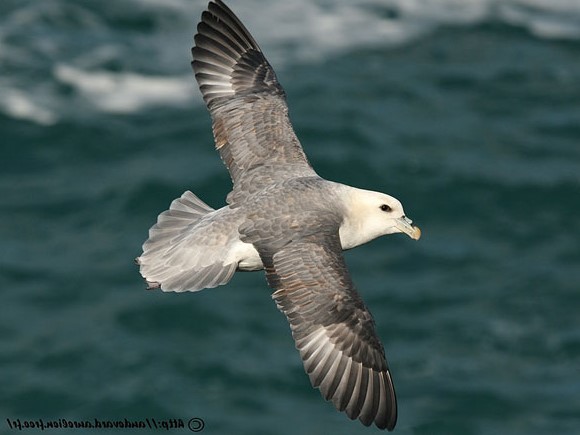Fulmarus glacialis
![]()
![]()
A small northern fulmar population of around a thousand individuals breeds in France on the cliffs of Pas de Calais and Brittany. They lay a single egg, which the male and female incubate alternately. The chicks are fed for over 2 months by both parents. This pelagic species frequents the French coast all year round, from the North Sea to the Arcachon Basin. Fulmars are opportunists, often feeding along continental shelves and very regularly on fishing discards as they follow boats. Like all birds in the Procellariiformes family (albatrosses, shearwaters, petrels), their sense of smell is highly developed, enabling them to locate favorable feeding areas from afar. They can travel hundreds of kilometers a day during the breeding season, and thousands of kilometers in winter in the North Atlantic. Their range is therefore very wide.
The movements and distribution at sea of fulmars breeding in France have never been studied before.
Fulmars are caught at sea or on their nests once the chicks have hatched, to avoid the risk of abandoning the eggs. As fulmars often nest on steep cliffs, the first thing to do is to locate nests that are relatively accessible without danger, as is the case at certain sites in the Sept-Iles National Nature Reserve.
The fulmars are equipped with OT15 GPS tags that record geographic position, altitude, tri-axial acceleration and temperature. These small 15g GPS transmit data regularly via the 4G system, and are attached to the feathers on the bird’s lower back with special tape. The tags fall off after a few weeks or months due to tape wear or feather moulting.
![]() Migratory in France
Migratory in France
![]() Breeder in France
Breeder in France
![]() Wintering in France
Wintering in France

